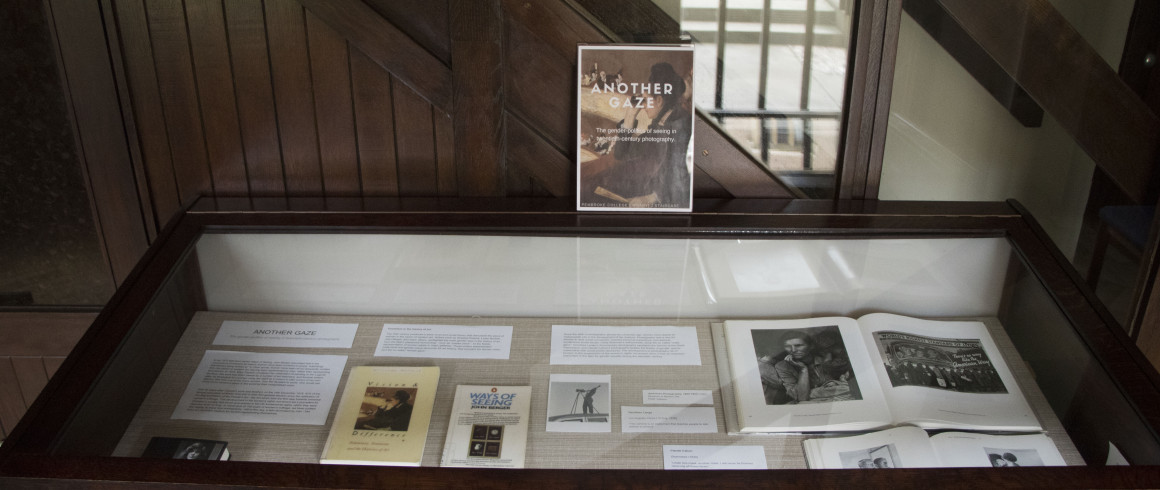Another Gaze
Frankie Enticknap is an Art History student at Glasgow. She’s been working at the Pembroke Library on and off since 2014.
One of her last tasks at Pembroke this summer was to create a display in College using Library material.
The display is titled “Another Gaze: the Gender-politics of seeing in twentieth century photography’, and features three female photographers who were working around the same time that women were first granted suffrage in England: Cindy Sherman, Claude Chaun, and Dorothea Lange. Through photography the women of the time were able to defy social convention to articulate their own experiences free of the weight of the ‘male gaze’. They tackled subjects such as the Great Depression, gender fluidity, and their own perceptions of the world, while the worlds of art and social theory began to discuss in earnest the place of women in the canon of western art. The ‘female gaze’ became a topic of discussion, and something to reach for beyond the limits of men’s, and society’s, conceptions of what women should and could be.
The display combines three of Frankie’s interests. She’s worked on digital archiving and so is interested in photography, studies Art History, and she is also interested in feminism.
“Photography is such an interesting medium, especially for women. It’s one of the earliest mediums through which women had their voices heard and respected without having to pretend to be a man –as late-Victorian painters often had to. There were these badass women going to conflict zones, being documentary-makers…there were women who identified as gender fluid having their voices heard. I’m also an Art History student, so that’s where some of my inspiration came from. In feminist theory in the 20th century there’s this concept called the male gaze meaning that men had the dominant voice and gaze, and women were objects of a man’s viewpoint. I was really interested in the female gaze and photography as a part of that.”
The freedom offered by photograph was partly, Frankie believes, a result of its relative newness. Traditional mediums for art, such as portraiture, had such long and storied histories that access into the Western canon generally came through Academies, which would be run by men. Photography, she says, is more “under the radar”, partly because at the time people weren’t convinced it really counted as art.
“Painting is undeniably art, whereas – and it’s absolute rubbish in my opinion – there’s been this question of whether photography is art, which I think it undeniably is. But it’s kind of played in its favour in terms of women and marginalised voices, because in the 20th century photography for a vast proportion of it wasn’t considered art, or it was low down on the pecking order. It wasn’t under so much scrutiny in terms of being a particular standard or having a rigorous selection process through academies.”
“There’s a mixture of photographers in there, some of them are overtly ‘we’re feminist, our goal is to have women’s voices heard’. But then Cindy Sherman, she said she hopes her work is feminist by nature but that she’s not out there to push the feminist theoretical message. It’s about women in a time when their voices weren’t allowed to be heard. It’s not necessarily the same as we talk about feminism now. It’s about their experiences being articulated by these women, and not restricted by how men and society are trying to define them.

Combine this with the fight for women’s votes and the People’s Act in 1918, and you have the ingredients for women to insert their own experiences, unencumbered by the male gaze, into artistic canon. Photography is important, Frankie says, not simply because of its artistic value, but because of what it tells us about social and political history. This is not to say, however, that all female photographers were feminists as we use the term today.
“Everybody has a right to expressing themselves and having their experience heard. It enriches society to have different voices heard. I do think that art is often undervalued but actually has played an important role in social and political history alongside its artistic value.”

